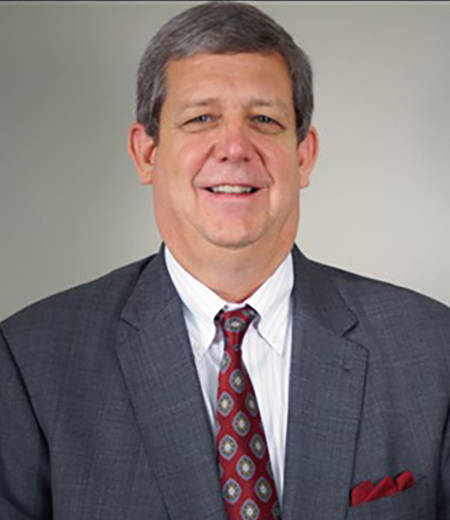Shift the culture to fill the shifts
Learning from the pandemic and embracing change can help food and beverage processors hire, train and retain their employees.

Photo courtesy of Getty Images.
As the worker shortage in America and across the globe persists, what can food and beverage processors do to hire, train and retain employees?
Every company has their own approach. For example, Conagra Brands uses the Conagra Performance System (CPS), which is a key enabler for them to be agile, maximize productivity, make quality food and maintain a safe work environment.
“CPS is a structured approach that emphasizes rigorous standards and processes that empower, engage and train employees,” says Dan Hare, Conagra’s senior director of communications. CPS prioritizes supporting, developing and recognizing team members. “This is motivating to employees because it instills a sense of ownership in our results and prepares people for different types of roles. Based on our experience over the years, we have found that the culture created through CPS helps us attract and retain employees.”
John Robertson, Food and Beverage Vertical, for Life Cycle Engineering's Reliability Consulting Group (LCE), says that, by designing reliability into daily plant operations and creating a culture of prevention and improvement, plants can operate as safer, more productive and more profitable businesses.
 "Scarcity of labor, already a challenge for manufacturing plants, was exacerbated by the pandemic and made automation look increasingly necessary for many operations."
"Scarcity of labor, already a challenge for manufacturing plants, was exacerbated by the pandemic and made automation look increasingly necessary for many operations."
— John Robertson, VP, Food and Beverage Vertical, LCE's Reliability Consulting Group
“We’ve found that food and beverage manufacturers are at various stages of maturity when it comes to ‘smart’ operations,” Robertson says. “A select few innovators and early adopters are realizing some or all of the benefits. They may have certain equipment or production lines that are optimized but not the full operation across multiple facilities.” That’s where smart culture comes in, he adds. “A smart culture connects and coordinates people with the technological tools, processes and best practices to optimize operations. It isn’t about adding another layer of technology to the mix,” Robertson says.
Amanda Hahn, interim CMO at HireVue, adds, “The fight for candidates is fierce right now, but our customers are seeing great success with the implementation of text messaging and chatbots.” Businesses need to eliminate any downtime between steps in the hiring process to beat their competition to offer. “Always-on communication that is powered by AI streamlines the process without overburdening already overextended talent teams.”

Learning from pandemic pandemonium
The whole world had to pivot to virtual interviews for the safety of employees, candidates and communities, Hahn says. “The fact is, not everyone could stay home as the virus raged, but we were able to help our customers mitigate risk where they could by keeping hiring distanced,” she says.
Conagra’s Hare notes, “During the pandemic, our first priority was to keep people safe and healthy while making food.” To do this, Conagra implemented social distancing practices and used face masks, shields and Plexiglas barriers. They also staggered shifts, screened employee temperatures and monitored for other COVID-19 symptoms. “We reformatted breakrooms, continued our rigorous plant maintenance and sanitation processes, and promoted good hygiene, preventative techniques, and good judgement in our facilities and away from the workplace. As an essential business, we also worked with health agencies to offer vaccinations to our employees early in the process,” he says.
“Scarcity of labor, already a challenge for manufacturing plants, was exacerbated by the pandemic and made automation look increasingly necessary for many operations,” Robertson says. Adding automation and robots or cobots to manufacturing facilities creates a huge amount of change for a company’s labor force.
Overcome challenges, embrace change
Robertson points out that technology might be the easy part to alleviating a labor crunch. “The hard part is changing the culture—getting people to adopt a new way of doing business when they may have done a job a certain way for 30 years. When corporate leadership teams determine that plants have to change up their asset management programs and their production processes, the first thing we recommend is adopting a sound organizational change management methodology.”
 “Always-on communication that is powered by AI streamlines the [hiring] process without overburdening already overextended talent teams.”
“Always-on communication that is powered by AI streamlines the [hiring] process without overburdening already overextended talent teams.”
— Amanda Hahn, interim CMO, HireVue
Building a strong capability for managing organizational change is important for transitions big and small. “For example,” Robertson says, “many food and beverage plants had to rapidly adjust their manufacturing lines so that they could supply different types of customers. This required becoming more agile and expecting the workforce to adapt to different ways of working.”
But the people side of change is what’s going to determine if new ways of working will be effective, he notes. “Simply stated, if the people don’t change, there is no change. A company can develop new policies and procedures but if people don’t adjust the way they do their work, if they don’t adopt the new procedures and implement those changes, then no change really occurs. That’s why we think it’s so important for manufacturers to develop those strong muscles for managing change—whether it’s caused by a pandemic, new technology or supply chain issues.”
Hahn adds that in 2020, 75% of companies introduced virtual hiring in some capacity and saw huge benefits. “Even as companies move to a blend of virtual and in-person hiring touchpoints in 2022, virtual isn’t going anywhere. HireVue Talent Trends survey respondents who moved to virtual interviews reported greater flexibility (54%), time savings (54%) and an easier time identifying the best candidates (43%).”
“I think the biggest challenge is that there simply are no longer enough people being trained for the jobs F&B processors need people to do, from mechanics who can fix machines to reliability engineers who can improve asset reliability and create a culture of continuous improvement,” Robertson says.
While good recruiting teams can help find the scarce talent that’s out there, Robertson believes one of the best ways to develop a smart—and engaged—workforce is to give people the opportunity to develop new skills and knowledge required for those hard-to-fill jobs. “It may require shifting the balance from hiring someone who has all the required skills to hiring someone with good aptitude and great attitude and providing the training and coaching that they need.”
He says it is also important to make it easy for people to perform well in jobs they need to learn. This means plants need to have a strong asset management program with well-documented standard work processes, equipment maintenance plans and job plans.
At Conagra’s processing plants, Hare says they manage many of their hiring processes and related programs at the local level using tactics that work best in those communities. “Our long-term presence and community impact through service projects and donations have helped us build strong, positive reputations in the communities where we operate, which helps attract new employees. In addition, since the beginning of the pandemic, we have ensured that we are offering competitive compensation. When we experience staffing shortages our plant leadership teams make the necessary adjustments such as changes to production schedules and the shifts people work.”
Looking for a reprint of this article?
From high-res PDFs to custom plaques, order your copy today!







